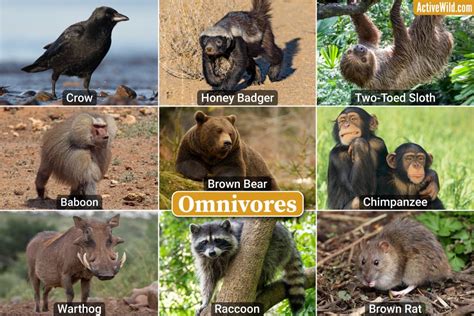A Comprehensive Guide to What Mice Like to Eat: Decoding Their Dietary Preferences
Mice, being small rodents with a voracious appetite, consume a diverse array of food items to sustain their energy levels. Understanding their dietary preferences is crucial for controlling their populations and preventing infestations.
Preferred Food Sources
Mice are omnivorous, meaning they eat both plant and animal matter. However, their primary dietary staples include:
-
Grains and Seeds: These form the cornerstone of a mouse's diet, including wheat, corn, oats, barley, and rice.
-
Fruits and Vegetables: Mice relish fruits like apples, bananas, and grapes, and vegetables such as lettuce, carrots, and potatoes.
-
Meat and Insects: Although they primarily consume plant matter, mice will opportunistically feed on meat and insects.
Dietary Requirements
Mice have specific nutritional requirements for optimal health and reproduction:

-
Water: Mice require daily access to water for hydration and digestion.
-
Protein: Protein is essential for growth, tissue repair, and enzyme production.
-
Carbohydrates: Carbohydrates provide energy and aid in digestion.
-
Fats: Fats support energy storage and the absorption of certain vitamins.
-
Vitamins and Minerals: Mice require a balanced intake of vitamins and minerals for overall well-being.
Table 1: Daily Nutrient Intake for Mice
| Nutrient |
Recommended Intake |
| Water |
5-10 mL |
| Protein |
15-20% of diet |
| Carbohydrates |
50-60% of diet |
| Fats |
10-15% of diet |
| Vitamins and Minerals |
According to species and life stage |
Table 2: Preferred Food Items for Mice
| Category |
Food Items |
| Grains and Seeds |
Wheat, corn, oats, barley, rice |
| Fruits |
Apples, bananas, grapes, berries |
| Vegetables |
Lettuce, carrots, potatoes, broccoli |
| Meat and Insects |
Cooked chicken, fish, mealworms, crickets |
Why Mice Prefer Certain Foods
Mice exhibit distinct preferences for specific food items based on:
-
Nutritional Value: Mice instinctively seek foods rich in essential nutrients.
-
Aroma and Taste: Mice possess a keen sense of smell and taste, which guides their food choices.
-
Availability and Accessibility: Mice feed on readily available food sources within their environment.
-
Learned Behavior: Mice can learn to associate certain foods with safety and comfort, influencing their preferences.
Benefits of Understanding Mouse Dietary Preferences
Understanding what mice like to eat provides a number of benefits, including:
-
Pest Control: Identifying preferred food sources allows for effective pest control measures.
-
Food Safety: Knowing what mice consume helps in preventing food contamination.
-
Disease Prevention: Certain foods can carry diseases that mice may transmit to humans or pets.
-
Habitat Management: Managing mouse populations through food control can protect property and ecosystems.
Table 3: Pros and Cons of Different Mouse Food Sources
| Food Source |
Pros |
Cons |
| Grains and Seeds |
Cost-effective, easy to access |
Low in nutritional value |
| Fruits and Vegetables |
Nutrient-rich, appealing to mice |
Can spoil quickly |
| Meat and Insects |
High in protein, palatable |
Can attract predators |
Effective Strategies for Managing Mouse Dietary Preferences
To effectively manage mouse dietary preferences and prevent infestations:


-
Remove Food Sources: Eliminate access to food that attracts mice, such as pet food, birdseed, and garbage.
-
Store Food Properly: Keep food in sealed containers or refrigerators to prevent mice from accessing it.
-
Seal Entry Points: Block any holes or cracks in walls, pipes, and doors that mice may use to enter.
-
Use Trapping and Baiting: Place traps and use bait that appeals to mice to capture them.
-
Maintain Hygiene: Regularly clean up spills and crumbs to remove food particles that attract mice.
FAQs on Mouse Dietary Preferences
1. Do mice have a favorite food?
Mice are omnivorous and do not have a single favorite food. However, they exhibit preferences for certain food categories based on nutritional value and availability.
2. What is the best way to attract mice for trapping?
Bait traps with foods that mice prefer, such as peanut butter, cheese, or bacon.

3. Can mice climb smooth surfaces?
Yes, mice can climb smooth surfaces using tiny claws and suction cups on their feet.
4. How often do mice need to eat?
Mice eat several times throughout the day, consuming small amounts of food frequently.
5. What is a mouse's average lifespan?
The average lifespan of a mouse in the wild is 6-12 months. In captivity, mice can live up to 2 years.
6. Can mice survive on human food scraps?
Yes, mice can survive on human food scraps, but this diet is not nutritionally balanced and may lead to health problems.
7. What types of food are toxic to mice?
Foods toxic to mice include chocolate, avocados, onions, garlic, and raisins.
8. How do mice communicate their food preferences?
Mice use scent marking to indicate food sources to other members of their colony.
